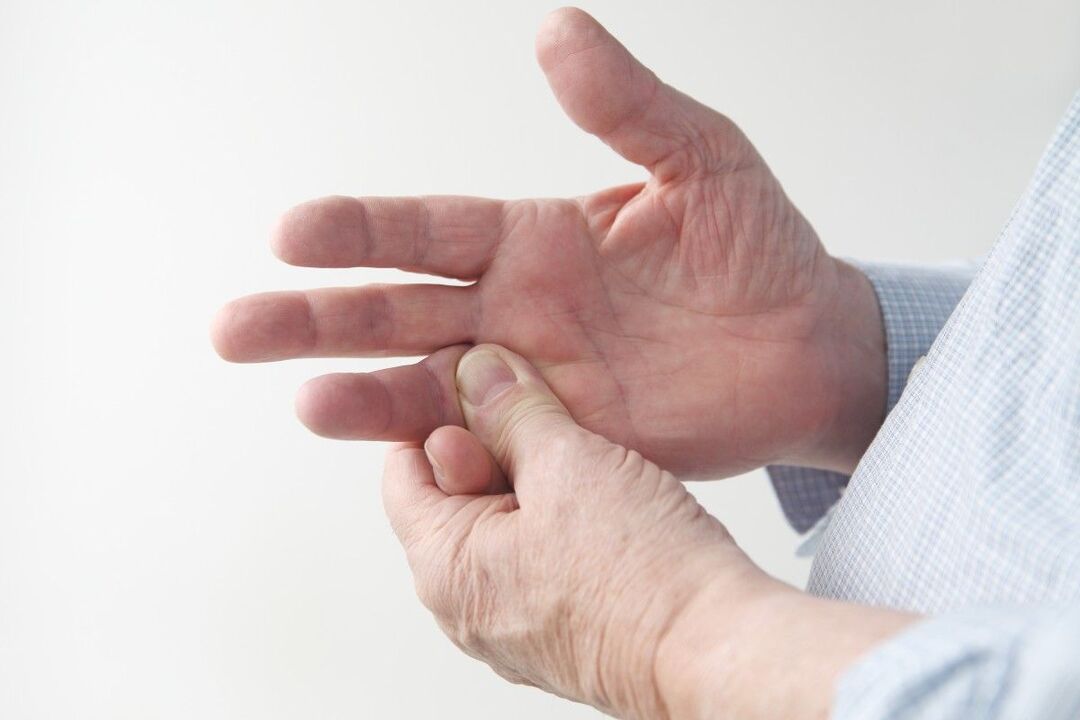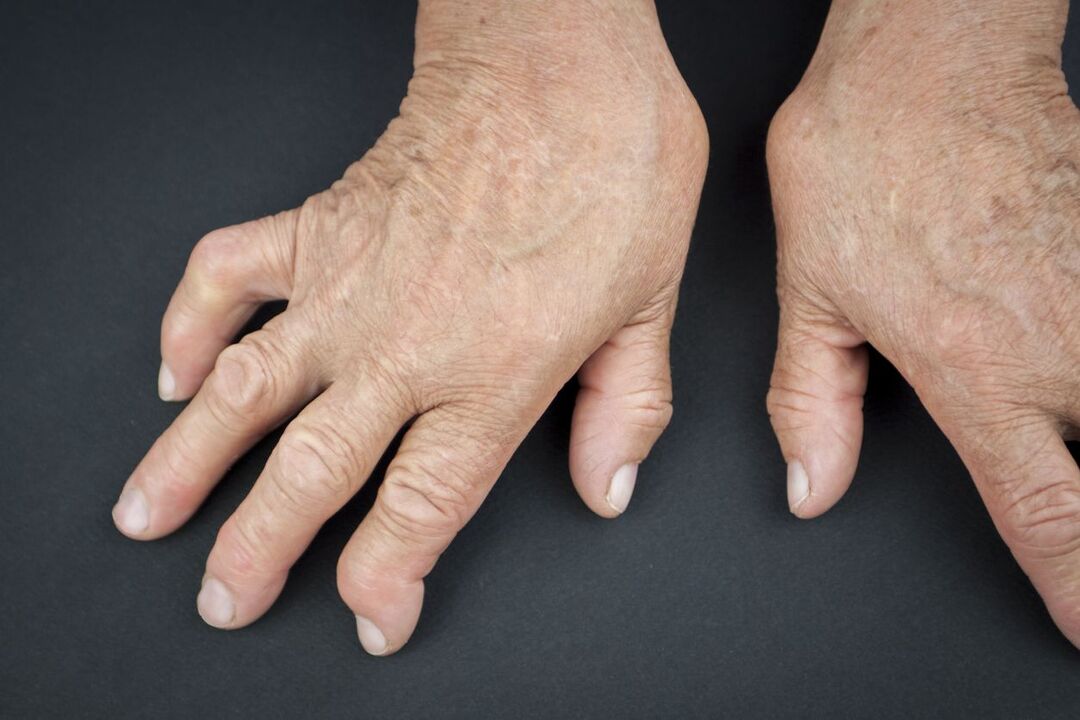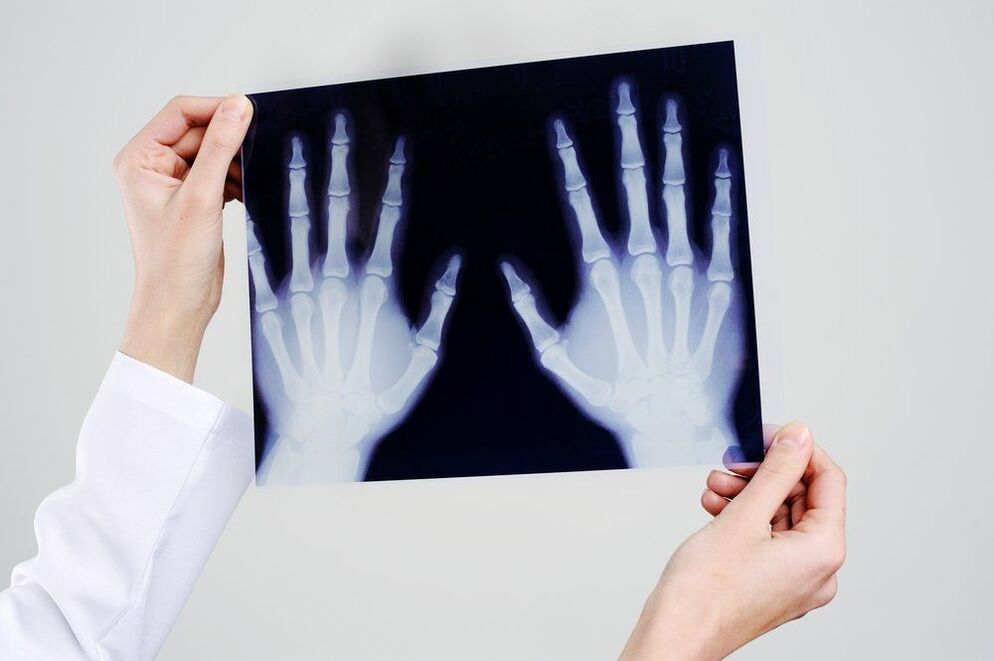
Pain in the finger joints when bending is most often caused by age-related changes, as well as irreversible processes in the body that lead to negative manifestations and the development of an uncomfortable condition in the patient. Such a pathology requires mandatory medical intervention, which includes all methods based on the causes of pain symptoms in the upper limbs.
Causes of pain
Fingers should be treated if the factors that caused such a problem are identified. As a rule, doctors divide pain in the joints of the hand into 2 groups (mechanical and inflammatory).
Mechanical pain is accompanied by a local inflammatory process, which is slightly expressed, which "obliterates" the picture of the disease. Quite often, patients do not pay attention to such symptoms, unlike inflammatory pain. In this case, there is stiffness in the morning, which can last more than 1 hour. During physical exertion, the pain is slightlyis decreasing.
We list the diseases that can provoke similar symptoms.
Rheumatoid arthritis
With the development of rheumatoid arthritis, small joints are damaged, but it is quite possible that internal organs and large joints are involved in the pathological process. Rheumatoid pain is accompanied by swelling and redness of the metacarpal phalanx of the middle and index fingers.
In this disease, the fingers are very painful when bending, and a similar symptom is observed on the other hand as well. A characteristic symptom of rheumatoid arthritis is pain that appears immediately after waking up, and the pain decreases in the evening.
Psoriatic arthritis
This disease primarily affects the skin and the pain is manifested mainly in the distal phalanges. During psoriatic arthritis, severe swelling of the fingers appears, which becomes bluish in color. In addition, with this disease, it is quite difficult to straighten the fingers.
Infectious arthritis
In infectious arthritis, there may be no systemic disorders at all, but it is characterized by the appearance of an acute attack of pain when bending the finger, which can last from 2-3 hours to 2-3 days. Sometimes chills and hyperthermia are observed.
Gout
This disease is the most common, but in most cases, patients suddenly learn the true reason why the joints of the fingers hurt when bending, after the diagnosis has been clarified. Most often, the disease occurs in people over 50 years old.

The main reason for the progression of gout is a violation of the metabolism of uric acid, which is quite difficult to remove from the body, deposited in cartilage and joints, which creates a serious obstacle to their normal functioning. Characteristic symptoms of gout are burning, severe pain.
Osteoarthritis
Among the most common reasons for the development of osteoarthritis are hereditary factors, as well as disorders of metabolic processes in the body, activities related to physical activity, etc. Sh. In most cases, osteoarthritis occurs in mature women, which is caused by hormonal changes.
A characteristic symptom of the disease, in addition to excruciating pain in the joints of the hand, is the appearance of swelling and subcutaneous nodules, which cause deformation of the fingers and thickening of their middle part.
Stenosis ligamentitis
The symptoms of this pathological process may be similar to arthrosis and arthritis, so an X-ray examination is needed to clarify the diagnosis. Clinical manifestations are quite characteristic: it is painful for the patient to straighten and bend the hands, and in some cases, to stretch the clenched palm. In addition, the extension of the fingers is accompanied by a characteristic click.
Rhizarthrosis
If pain occurs in the joint of the thumb, then, most likely, such a condition may indicate rhizarthrosis, which manifests itself in the form of intoxication, previous infections and various types of injuries.

During the initial examination of the patient, the localization of pain is determined, which intensifies during specific loads (turning a key, turning a door handle, opening a screw cap, etc. ). At the initial stage of the development of the disease, the finger on the hand hurts only when bending after physical exertion, but the progression of rhizarthrosis leads to the fact that the pain begins to bother the patient even at rest. Gradually, joint deformation occurs with limitation of motor activity.
In addition to all the above-mentioned diseases, the development of carpal tunnel syndrome, which is most often diagnosed in young patients, can cause unpleasant sensations in the area of the thumb or index finger. This is due to prolonged sitting at the computer, during which the ulnar nerve is compressed, which in turn leads to the development of pain in the fingers.
Symptoms of pathology
Serious signs of the presence of the disease, which can cause a number of negative consequences, are:
- nodular neoplasms in the tendon area;
- Crackling of fingers when moving;
- pain with palpation of the hands;
- sharp, piercing pain and impaired fine motor skills;
- compaction in the bends of the fingers and hyperemia of the inflamed area;
- inability to squeeze the little fingers;
- local and local increase in body temperature;
- increased night pain in the arms;
- Special attention should be paid if the finger suddenly becomes swollen and deformed.
If the patient discovers such manifestations, an urgent consultation with a doctor is required, who will carry out diagnostic measures and prescribe complex therapy to relieve pain symptoms and the inflammatory process.
Diagnostic methods
Patients who experience pain in their hands, especially after sleeping, should undergo a course of therapy, but only after finding out the reasons for the development of the pathological condition.
In this case, diagnosis includes the following methods:
Radiography
X-ray examination is the most informative way to detect tumor-like neoplasms, various injuries and inflammatory processes in the joints of fingers and hands.

Despite the high efficiency of radiography, it has a significant drawback - the inability to assess the condition of soft tissues.
Ultrasonography
Using ultrasound, the presence of an inflammatory process in the tissues is determined and the results of joint damage are detected. This procedure is most effective for synovitis, arthritis, tendonitis, bursitis and arthrosis. In cases where the middle finger is numb and painful, an ultrasound examination of the blood vessels is possible to determine the violation of blood flow in the upper extremities.
CT scan
To get a more accurate picture of the pathology of bone tissue and joints, it is recommended to conduct a computed tomography, which takes 5-7 minutes and is well tolerated by patients. The difference between computed tomography and radiography is that the obtained information can be seen directly on the monitor screen, which allows you to get more reliable information.
Electrospondylography
Electrospondylography, which has been used in medicine relatively recently, is a highly effective and universal method of examination. This test can detect early damage to the spine, which is responsible for the function of the upper limbs, including the fingers.
MRI
Magnetic resonance imaging is rightfully considered an informative and accurate study, therefore it is often used in the diagnosis of various diseases, including joints. The pathological process is determined using electromagnetic waves, which create an image of the tissue, localization and the degree of development of the inflammatory process.
In addition, blood tests (clinical and biochemical), urine tests for the presence of blood and proteins, as well as joint puncture for constant finger pain are prescribed.
Important! It should be noted that fingers can hurt for various reasons, but only a highly qualified specialist should correctly diagnose the disease and prescribe individual pain treatment.
treatment
If pain symptoms appear, the main therapeutic measures should be aimed at eliminating the causes of the development of the pathological process.
Complex therapy includes both medical and folk remedies.
Drug treatment
To alleviate the pathological process, the doctor prescribes a course of nonsteroidal anti-inflammatory drugs (NSAIDs), which, in addition to reducing inflammation, relieve pain symptoms and reduce tissue swelling.
In osteoarthritis, long-term use of chondroprotectors is recommended to prevent the nutrition of cartilage and its subsequent destruction. These drugs prevent recurrence of the disease.
In cases where there is unbearable pain in the fingers and the inflammatory process is in an advanced stage, glucocorticosteroids are prescribed. They quickly relieve the symptoms of inflammation and regulate metabolic processes in the body, thereby accelerating tissue regeneration.
If the main cause of painful symptoms in the area of the fingers is a bacterial infection, the doctor prescribes antibiotics and antibacterial drugs, depending on the severity of the symptoms and the body's sensitivity to such drugs.
Important! Do not self-medicate, as this can cause allergic reactions and side effects. At the beginning of the therapy, it is necessary to restore the damaged joints. And only at the stage of relaxation, it is recommended to use auxiliary methods (physiotherapy, hand massage, gymnastics, etc. ).
Physiotherapy
Pain in the joints of the hands indicates a violation of the functioning of the body as a whole and, in particular, the development of degenerative-dystrophic processes. That is why, first of all, it is necessary to limit physical activity and reduce physical stress on the joint.
Physiotherapy measures include resonance therapy, electrosleep and electrophoresis with the addition of novocaine. In addition, therapeutic exercises, use of mud, hydrogen sulfide and radon baths, as well as massage, including manual massage, have a positive effect during the remission period.

diet
Proper nutrition is of little importance in preventing the occurrence of pain, because the body must receive sufficient amounts of trace elements, such as potassium, magnesium, calcium, phosphorus, iron and vitamins, primarily through food.
Products that can reduce pain in finger joints when bending:
- Fish oil and flaxseed oil. These products contain a large amount of omega-3 fatty acids, which improve the condition of the vascular system and participate in the normalization of fat metabolism.
- Apple cider vinegar, because it enhances the removal of salts and participates in the process of alkalizing the blood.
- Radish, lettuce and nuts.
- Egg yolk, juice and pomegranate fruit.
- Blackcurrants and figs.
- Ginger and cauliflower.
- Low-calorie cheese and olive oil.
It is necessary to limit (and in some cases completely exclude from the diet) high-fat dairy products, sweet and high-calorie foods. Smoked meat, alcoholic beverages, coffee, strong tea, as well as products containing oxalic acid.
Folk remedies
At the initial stage of the disease, pain can be solved using traditional medicine, for example, using a compress of kefir and chalk, in the form of a diluted paste. Pre-cooked and slightly cooled oatmeal has a similar effect.
You can prepare a hand massage cream from equal amounts of ground laurel and juniper pine, adding softened butter to this powder. After thoroughly mixing the ingredients, the ointment can be used as intended.
In case of exacerbation of pain symptoms, 1 s. is recommended. K. spoon of olive oil with 5 drops of garlic juice, then drink the prepared mixture in the morning, 30 minutes before breakfast. The procedure should be repeated for 3-4 days.
Sudden, severe pain in the finger prevents the performance of daily duties, causing unbearable suffering to the patient. Such manifestations should not be ignored, because they can indicate a number of serious diseases that can cause pain symptoms.
Only early diagnosis and timely intervention of an experienced doctor allow to determine the etiology of the disease, on the basis of which the doctor decides how and with what to treat to get the most positive result. With timely intervention, the prognosis for full recovery is favorable.

















































